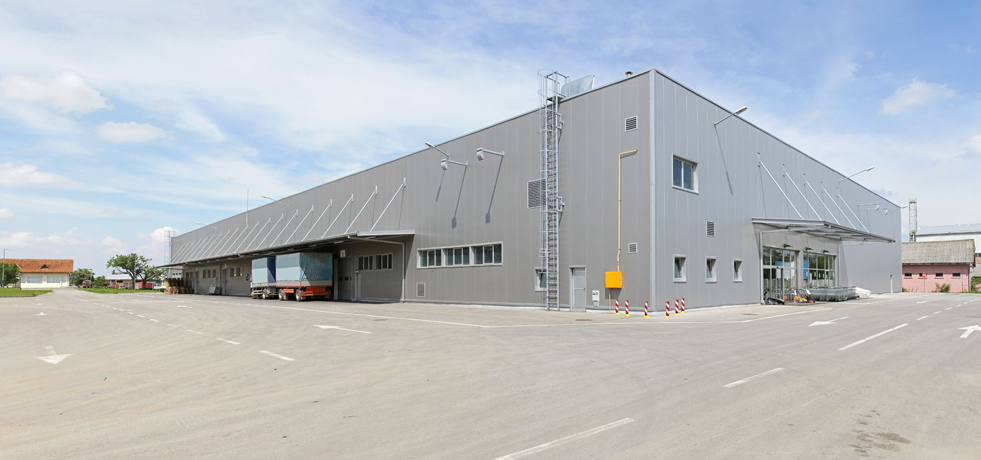Tips For Optimization Of Your Warehouse
Running a business can be an overwhelming task with the immense responsibility of maintaining the stock, the numbers and ensuring that you’re up to mark with the latest technology. The advancement in technology hardly allows any business to work out of a disorganised warehouse. Given the role and size of a warehouse, it can be quite difficult to know where to start and decide what all needs change. Some of the best logistics parks in India are shifting towards a change in their work culture.
Here are a few tips on how you can optimise your warehouse for a more efficient flow of activity.
Systematic Storage
The modern storage technology allows you to label and assign identification to each row, rack or column. The system becomes so organised that you don’t have to worry about forgetting where the shipment is stored.
Another aspect of storage you should pay heed to is with respect to the weight, size and shape of the shipment. To minimise the damage and mishandling you need racks and bins in accordance to the items. Try and make things as convenient for the workers.
Physical Layout
Many are a bit hesitant in changing the layout of the warehouse as it might affect the flow of activity for the workers. But this can help with increasing the efficiency and accuracy in the long run.
Certain things to make it more systematic are:
• Prioritise racking space according to sales volume.
• Ensure separate routes for vehicles and on foot traffic.
• Find balance between length and manoeuvrability for aisles in storage areas.
A separate area is required for hazardous, flammable or explosive materials. You need to follow certain guidelines and regulations laid down by the governmentin these cases.
Analytics
The data at a warehouse is immense and its categorisation is of prime importance. There are a number of tools at your disposal for ensuring the flow of operations and keeping a check on the data. This analytical potential needs to be used for optimum and efficient results.
The analysis also allows business owners to predict future patterns of demand and supply. This results in planning the labour hours and production in accordance to the predictions.
Automation
Warehouses have mostly been manually controlled for years. Be it the shipment, equipment or the assets, they were all managed in person. This now doesn’t have to be the case with automation. This has reduced the chances of human errors which saves time, resources and money.
With automation it is possible to take out the human element. With the right warehouse management software, materials and products can be automatically grouped by type and storage requirements. This has been adapted by a number of warehouse spaces in Delhi, Mumbai, and other cities.
Solutions like these can help convert your warehouse into the modern workplace that has an efficient and hassle free flow of activities. In the long run, this optimisation will surely result in profits.
Here are a few tips on how you can optimise your warehouse for a more efficient flow of activity.
Systematic Storage
The modern storage technology allows you to label and assign identification to each row, rack or column. The system becomes so organised that you don’t have to worry about forgetting where the shipment is stored.
Another aspect of storage you should pay heed to is with respect to the weight, size and shape of the shipment. To minimise the damage and mishandling you need racks and bins in accordance to the items. Try and make things as convenient for the workers.
Physical Layout
Many are a bit hesitant in changing the layout of the warehouse as it might affect the flow of activity for the workers. But this can help with increasing the efficiency and accuracy in the long run.
Certain things to make it more systematic are:
• Prioritise racking space according to sales volume.
• Ensure separate routes for vehicles and on foot traffic.
• Find balance between length and manoeuvrability for aisles in storage areas.
A separate area is required for hazardous, flammable or explosive materials. You need to follow certain guidelines and regulations laid down by the governmentin these cases.
Analytics
The data at a warehouse is immense and its categorisation is of prime importance. There are a number of tools at your disposal for ensuring the flow of operations and keeping a check on the data. This analytical potential needs to be used for optimum and efficient results.
The analysis also allows business owners to predict future patterns of demand and supply. This results in planning the labour hours and production in accordance to the predictions.
Automation
Warehouses have mostly been manually controlled for years. Be it the shipment, equipment or the assets, they were all managed in person. This now doesn’t have to be the case with automation. This has reduced the chances of human errors which saves time, resources and money.
With automation it is possible to take out the human element. With the right warehouse management software, materials and products can be automatically grouped by type and storage requirements. This has been adapted by a number of warehouse spaces in Delhi, Mumbai, and other cities.
Solutions like these can help convert your warehouse into the modern workplace that has an efficient and hassle free flow of activities. In the long run, this optimisation will surely result in profits.



Comments
Post a Comment